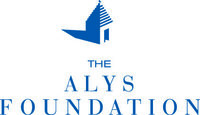"Doctors on Call"
- School:
- South Walton High School
- Subject:
- STEM Education
- Teacher:
- Joan Kennett
- Students Impacted:
- 115
- Grade:
- 9-12
- Date:
- October 12, 2017
Investor
Thank you to the following investor for funding this grant.
CHELCO - $987.00
Original Grant Overview
Goal
The goal of this challenging project is to determine the fitness of an individual by studying the circulatory and respiratory systems of the body through laboratory investigations. Students will role play as "doctors" in a laboratory setting.
What will be done with my students
The students will investigate and diagnose circulatory and respiratory conditions in an eight station laboratory inquiry over a two week period and continue to monitor the students investigations throughout the year by:
*Obtain graphical representation of the heart rate at rest.
*Observe the change in heart rate that occurs with repetitive coughing.
*Correlate heart rate response to autonomic nervous system activity
*Monitor the heart rate of the test subject using the Exercise Heart Rate Monitor.
*Evaluate the effects of hyperventilation and hypo-ventilation on heart rate
*Use the EKG Sensor to graph your heart's electrical activity.
*Determine the time interval between EKG events.
*Calculate heart rate based on your EKG recording
*Obtain graphical representation of heart rate and blood pressure.
*Compare heart rate and blood pressure before and after exposure to cold stimulus.
*Observe an example of sympathetic nervous system activation ("fight or flight response").
*Determine the effect of exercise on heart rate, and systolic, diastolic and mean arterial pressures.
*Use blood pressure readings and pulse to infer changes in cardiac output and peripheral vascular resistance with exercise.
*Correlate the fitness level of individuals with amount of daily exercise
*Monitor the respiratory rate of an individual.
*Evaluate the effect of holding of breath on the respiratory cycle.
*Evaluate the effect of re-breathing of air on the respiratory cycle.
*Obtain graphical representation of the electrical activity of a muscle.
*Associate muscle activity with movement of joints.
*Correlate muscle activity with injury.
These laboratory investigations are connected to the science biology standard:
Standard: Organization and Development of Living Organisms -
A. Cells have characteristic structures and functions that make them distinctive.
B. Processes in a cell can be classified broadly as growth, maintenance, reproduction, and homeostasis.
C. Life can be organized in a functional and structural hierarchy ranging from cells to the biosphere.
D. Most multicellular organisms are composed of organ systems whose structures reflect their function.
* SC.912.L.14.36
Describe the factors affecting blood flow through the cardiovascular system.
* SC.912.L.14.37
Explain the components of an electrocardiogram.
* SC.912.L.14.38
Describe normal heart sounds and what they mean.
* SC.912.L.14.39
Describe hypertension and some of the factors that produce it.
* SC.912.L.14.40
Describe the histology of the major arteries and veins of systemic, pulmonary, hepatic portal, and coronary circulation.
* SC.912.L.14.41
Describe fetal circulation and changes that occur to the circulatory system at birth.
* SC.912.L.14.43
Describe the histology of the respiratory system.
* SC.912.L.14.44
Describe the physiology of the respiratory system including the mechanisms of ventilation, gas exchange, gas transport and the mechanisms that control the rate of ventilation.
* SC.912.L.14.6
Explain the significance of genetic factors, environmental factors, and pathogenic agents to health from the perspectives of both individual and public health.
Benefits to my students
The 115 students in my biology classes will benefit with these laboratory activities by using the technological equipment listed below along with the logger pro software system and LabQuest 2, which I currently have in my high school lab. (FYI: Fortunately, I received a grant last year from Walton Education Foundation and am using the logger pro software and LabQuest 2 for this year's anticipated grant for the lab investigations) Students will be able to explain, compare, and diagnosis the human physiology elements of the circulatory and respiratory systems while conducting the experiments and role playing as "doctors". By using technology and graphs students will foster and develop critical thinking and problem-solving skills, read and understand graphs, explain and justify results of data, and understand the biological and chemical issues of the circulatory and respiratory systems. By providing time and guidelines for student-based inquiry research activities, reading and math skills will be enhanced by collecting data and measurement activities. By providing an opportunity for students to get directly involved and engaged in hands-on activities, it will allow them the discipline and opportunity to participate in a real-world application of science. The direct involvement of the students and their analytical presentations as "doctors" will result in a deeper understanding of correct scientific procedures and analytical processes, not to mention better preparation for accelerated learning and inspire students each year from these challenging laboratory activities to seek career related jobs in STEM.
.
Budget Narrative
The equipment/materials necessary to successfully conduct the multiple laboratory investigations are:
* The Hand-Grip Heart Rate Monitor (The Hand-Grip Heart Rate Monitor continuously monitors heart rate before, during, and after exercise or while a person is stationary.)
* The EKG Sensor (The EKG Sensor measures electrical signals produced during muscle contractions, and used to make standard 3-lead EKG tracings or surface EMG recordings.)
* The Gas Pressure Sensor (cellular respiration)
* The Stainless Steel Temperature Probe
* The Respiration Monitor Belt(The Respiration Monitor Belt is used to measure human respiration rates.)
* The Blood Pressure Sensor (The Blood Pressure Sensor is a non-invasive sensor designed to measure human blood pressure. It measures systolic, diastolic and mean arterial pressure utilizing the oscillometric technique. Pulse rate is also reported.)
* The 25-g Accelerometer
* Hand Dynamometer ( Hand Dynamometer is used to measure grip strength, pinch strength, and to perform muscle fatigue studies.)
* 25 White Lab Coats (empower students as "doctors" while conducting the multiple laboratory experiments)
Items
| # | Item | Cost |
|---|---|---|
| 1 | The Hand-Grip Heart Rate Monitor | $119.00 |
| 2 | The EKG Sensor | $147.00 |
| 3 | The Gas Pressure Sensor | $83.00 |
| 4 | The Respiration Monitor Belt | $63.00 |
| 5 | The Stainless Steel Temperature Probe | $29.00 |
| 6 | The Blood Pressure Sensor | $105.00 |
| 7 | The 25-g Accelerometer | $92.00 |
| 8 | Hand Dynamometer | $99.00 |
| 9 | 25 White Lab Coats | $250.00 |
| Total: | $987.00 |






Share
Please share this page to help in fulfilling this grant.
Email to a Friend